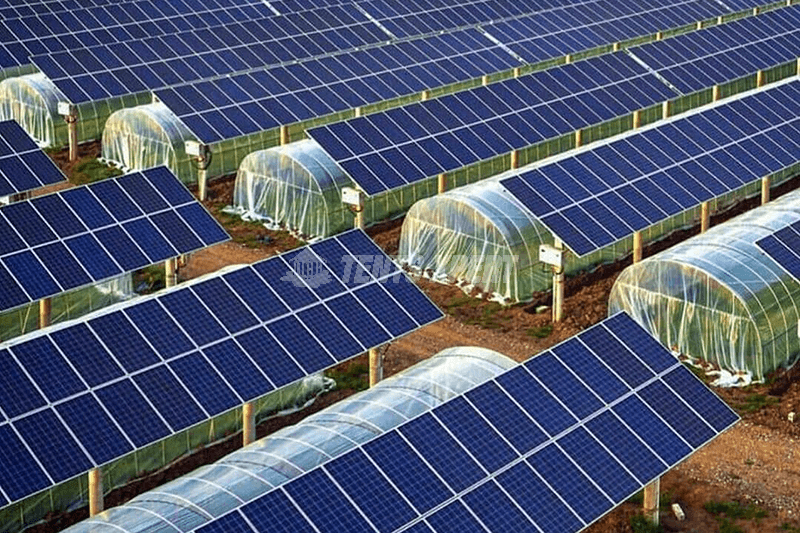Jul. 31, 2025
As the global population continues to grow, the demand for lasting energy solutions has never ever been more immediate. Renewable energy, that includes solar, wind, hydro, geothermal, and biomass, has become among the most encouraging ways to fulfill the globe's energy demands while combating climate adjustment. With the ecological influence of nonrenewable fuel sources coming to be much more evident, the change to renewable energy is not only advantageous yet crucial for ensuring a cleaner, much healthier earth. This post explores the value, growth, challenges, and future of renewable energy.

The significance of renewable energy exists mainly in its capacity to change fossil fuels, which are the main sources of worldwide greenhouse gas discharges. Nonrenewable fuel sources such as coal, oil, and gas have long been the foundation of contemporary industrial society; however, they come at a hefty environmental cost. Burning nonrenewable fuel sources for power releases large amounts of carbon dioxide and other greenhouse gases right into the ambience, adding to worldwide warming and climate adjustment.
Renewable energy, on the other hand, creates power without sending out unsafe contaminants into the environment. Solar panels transform sunlight into electrical energy, wind generators harness the power of wind, and hydropower uses the power from moving water to create power. By making use of these natural resources, renewable energy lessens our dependence on fossil fuels, minimizes pollution, and gives a cleaner choice for the earth.
Moreover, renewable energy sources are bountiful, lasting, and often available in your area, making them a viable alternative for powering homes, services, and sectors. Unlike nonrenewable fuel sources, which are limited and based on market fluctuations, renewable energy sources like the sun and wind are endless and will remain to create power for the near future.
The need for renewable energy is speeding up as nations and sectors identify the need for a shift towards cleaner power. According to the International Renewable Energy Firm (IRENA), renewable energy is currently the fastest-growing section of the worldwide power market, and this growth reveals no indicators of decreasing.
Among the key motorists of this development is the raising concern over environmental change. Federal governments and organizations worldwide are establishing enthusiastic targets for lowering carbon exhaust and raising the share of renewable energy in their energy mix. The Paris Agreement, taken on in 2015, set a global goal to limit worldwide heating to well listed below 2 ° Cover pre-industrial degrees, with efforts to limit the temperature increase to 1.5 ° C. Getting this goal needs quick decarbonization of the power industry, and renewable energy is main to this effort.
Additionally, the technical improvements in renewable energy have made these innovations extra cost effective and efficient. The price of solar panels has lowered considerably in recent years, and wind energy is now among the most competitive sources of power generation. These developments are making renewable energy a lot more obtainable to both established and developing countries, further fueling its development.
• Solar Power: Solar energy is perhaps the most extensively identified form of renewable energy. Photovoltaic panel, made up of solar (PV) cells, capture sunlight and convert it right into power. Solar energy can be used to power homes, services, and large-scale nuclear power plants. Its potential is vast, especially in regions with plentiful sunlight, and improvements in modern solar technology have made it significantly affordable.
• Wind Energy: Wind power is produced by using the air with wind turbines. Wind ranches, both onshore and offshore, are currently capable of creating substantial amounts of electricity. Wind power is clean, renewable, and among the most rapidly expanding sources of power internationally. In areas with strong and regular winds, wind power can give a dependable and effective resource of power.
• Hydropower: Hydropower, or hydroelectric power, involves using the circulation of water to generate electrical power. Huge dams and small-scale hydropower systems both capture the energy of streaming water to produce power. Hydropower has been utilized for centuries, and it remains a vital part of the renewable energy mix. While large dams can have ecological impacts, small hydropower projects have a lower ecological footprint and can be a lasting option.
• Geothermal Energy: Geothermal power utilizes the warm from the Planet's inside to generate power and warmth structures. This type of energy is particularly beneficial in regions with high geothermal task, such as Iceland, parts of the United States, and the Philippines. Geothermal energy is reputable, sustainable, and can give both baseload power and heating solutions.
• Biomass: Biomass power is created by melting natural materials, such as timber, agricultural waste, and algae, to generate warmth or power. Biomass is thought about being renewable because the materials utilized to generate it can be replenished with natural processes. It can be made use of as a substitute for fossil fuels in different applications, consisting of electrical power generation, home heating, and transportation.
The future of renewable energy is unbelievably encouraging. As innovation remains to breakthroughs and prices continue to drop, renewable energy will certainly become extra commonly embraced around the world. This change will be driven by the demand to attend to climate change, decrease energy hardship, and develop sustainable financial growth.
One of the most amazing advancements in renewable energy is the assimilation of renewable sources with energy storage innovations. Solar and wind power, while plentiful, are recurring resources of power-- they just create electricity when the sun is beaming, or the wind is blowing. Power storage space remedies, such as batteries and pumped hydro storage, are necessary for balancing supply and demand and guaranteeing a trustworthy electrical energy grid.
Along with storage technologies, improvements in smart grid systems will allow much more reliable power circulation. Smart grids use innovative sensors and communication innovation to maximize the generation, distribution, and usage of electricity. By integrating renewable energy sources right into these grids, utilities can better manage energy use and decrease waste.
Additionally, electric vehicles (EVs) are expected to play an important role in the renewable energy future. As EVs become a lot more extensive, they will certainly work as both customers and storage remedies for renewable energy. When attached to the grid, EVs can aid in stabilizing power needs by charging through excess renewable energy and discharging during peak demand durations.
The renewable energy industry is among the fastest-growing markets in the world. According to a record by Roots Analysis, the renewable energy market dimension is forecasted to grow from USD 1,262 billion in 2024 to USD 4,607 billion by 2035, standing for a CAGR of 12.48% during the projection duration till 2035. This growth offers significant chances for investors, companies, and federal governments alike.
As the need for renewable energy continues to rise, the market will see increased investment in modern technologies such as solar, wind, power storage, and grid innovation. Governments are offering incentives, aids, and tax credit ratings to urge the adoption of renewable energy options, additionally sustaining development in the industry.
Private sector investment is additionally flowing right into renewable energy tasks, especially in developing regions where renewable energy can help meet expanding power needs. For example, Africa has immense capacity for solar power, and as innovation becomes much more budget-friendly, the continent is expected to see considerable development in renewable energy installations.
While the future of renewable energy is intense, there are still numerous difficulties to overcome. Among the primary obstacles is the recuring nature of renewable energy sources like solar and wind. Power storage space technologies, although enhancing, are still expensive, and grid facilities in several parts of the world need to be updated to accommodate these variable energy sources.
In addition, political and regulative obstacles can decrease the implementation of renewable energy tasks. Some federal governments remain to support nonrenewable fuel source industries, which can create resistance to the transition to renewable energy. Nevertheless, as public recognition of environmental change grows, it is most likely that even more federal governments will certainly prioritize renewable energy in their power policies.
An additional difficulty is the need for a skilled labor force to sustain the renewable energy industry. As the field expands, there will certainly be a growing demand for workers with know-how in renewable energy modern technologies, energy storage, grid administration, and power policy.
Renewable energy is the foundation of a lasting future, offering clean, plentiful, and reliable power that can assist minimize climate modification and meet growing international power needs. As the globe remains to change away from nonrenewable fuel sources, renewable energy will play an increasingly essential duty to fit the global power landscape. With continued innovations in technology, raised investment, and helpful policies, the renewable energy industry is positioned for substantial growth in the coming years.
While difficulties continue to be, the long-term advantages of renewable energy far exceed the barriers. By harnessing the power of the sunlight, wind, water, and other natural resources, we can create a greener, extra lasting world for future generations. The moment for activity is now, and the renewable energy change is well in progress.
Author Name- Satyajit Shinde
Satyajit has always had a keen interest in reading and writing. He forayed into the field of writing due to his love for words and the urge to do something different. He aspires to make each of his written works a piece of art.

Chat Now